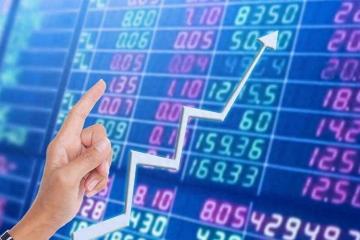The Russian economy is currently at a critical juncture, with the central bank's decision-making under intense scrutiny amidst rising inflation that has defied expectationsMarket analysts and economists closely observe the actions of the Central Bank of Russia (CBR) as it contemplates further interest rate hikes to combat inflationary pressures that show little sign of recedingThe ongoing economic challenges have stirred debates about the effectiveness of the CBR's monetary policy, as high interest rates are increasingly being blamed for stifling growth in various sectors.
The latest interest rate hike cycle began in July 2023, after maintaining a key interest rate of 7.5% for around ten monthsWith inflation rates climbing, the CBR was compelled to take action, increasing this rate to a staggering 16%. This dramatic rise has raised concerns among stakeholders about the broader implications for consumer spending and business investment.
Interestingly, there was anticipation in early June regarding a potential interest rate increase
Advertisements
However, the CBR's decision to maintain the prevailing rate suggested that inflation metrics were still within acceptable boundsFurthermore, the CBR exhibited caution, recognizing that aggressive hikes might further destabilize an already taut economic environmentAnatoly Aksakov, Chairman of the Financial Markets Committee of the State Duma, posited that holding the rate at 16% signals that authorities have begun to regain control over the economic imbalances without necessitating more draconian measures.
Recent reports released by the CBR indicate that the economy remains robustIn the first quarter of this year, Russia's GDP growth was reported at 5.4% year-on-year, outperforming earlier forecasts by the bankWhile signs of a slowdown emerged in the second quarter, consumer activity appeared resilient, with positive indicators in business surveys and fixed asset investments suggesting sustained investment demand
Advertisements
Notably, the Russian business sentiment index rose in May to its highest level in nearly 12 years, accompanied by an exceptionally low unemployment rate, which keeps the labor market under stress.
Despite these positive signs, internal debates at the CBR indicate a divergence of opinion regarding inflation trendsSome analysts warn that inflation in May exceeded expectations and note that the ongoing expansion of credit and consumption may perpetuate high inflationConversely, another contingent believes the recent fluctuations in prices are primarily due to transient factors, making it challenging to develop a clear outlook on inflation dynamicsThere are discussions among policymakers regarding the lagging effects of monetary policy on lending and consumer activity, and the potential for inflation to decline naturally over time.
Supply-demand imbalances remain a critical factor fueling inflation
Advertisements
The CBR's report highlighted that robust consumer demand continues to outstrip supply expansion, a situation exacerbated by persistent labor shortages in key sectorsThe low unemployment rate may be perceived as a sign of economic vitality, but it masks a growing disconnect in labor supply and demand that particularly affects sectors like information technology.
Several factors are presently at play that may compel the CBR to reconsider its stance on interest ratesLabor shortages exacerbate the supply-demand imbalance, contributing to sustained inflationary pressuresAdditionally, government policies that offer attractive mortgage rates may dilute the impact of interest rates on credit levels, necessitating a tighter monetary policy to bring inflation back in line with targetsGeo-political tensions further complicate the situation, as deteriorating trade relationships, especially in commodity markets, lead to a decrease in exports and high import demand, creating uncertainty around the currency's stability and inflation metrics
- Weak Nonfarm Data Hits US Stocks
- The Rise of Sustainable Investment in Financial Markets
- Analyzing the U.S. Economy in the Third Quarter
- Forex Investing Through Economic Cycles
- Indonesia's Public Spending, Investment Recovering
Furthermore, heightened inflation expectations among consumers and businesses may contribute to a self-fulfilling inflationary cycle, while an expanding budget deficit could worsen the inflationary landscape.
The market is alert to the implications of any further rate hikesIf the CBR opts to increase rates, it may add pressure to an already fragile economic landscapeConversely, failing to act decisively could hinder the propensity for savings among households and businesses, impede the slowdown in credit growth, and stifle domestic consumptionSuch scenarios could have long-term repercussions on achieving the inflation target of 4% by 2025. However, early or overly aggressive rate hikes may inflict damage on economic momentum, perpetuate past dilemmas, and raise costs for consumers, thereby exacerbating inflation rather than mitigating it.
During the June monetary policy meeting, the CBR decided against increasing rates, asserting that future policy will be predicated on upcoming economic data
